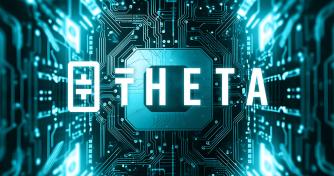 Op-ed: Hollywood needs Web3, not vice versa
Op-ed: Hollywood needs Web3, not vice versa Op-ed: Hollywood needs Web3, not vice versa
Web3's potential to reshape Hollywood by challenging traditional hierarchies and ushering in a new era of interactive, personalized content.

Cover art/illustration via CryptoSlate. Image includes combined content which may include AI-generated content.
The following is a guest post from Andrea Berry, Head of Business Development at Theta.
In the glimmering world of Hollywood, the convergence of technological innovation and creative imagination has been a bedrock principle since its inception. The industry, known for captivating audiences worldwide, has progressively evolved – from silent films to sound, black and white to color, and now, from the physical realm to the digital.
As we find ourselves on the cusp of another significant evolution, Web3 presents a technological novelty and a fundamental shift in how we create, distribute, and consume content. This shift doesn’t merely offer another tool for Hollywood to wield in its ongoing mission to captivate and entertain. Still, it challenges the hierarchies and gatekeeping structures the industry has relied upon for decades.
Admittedly, embracing Web3 is a complex task, and the implications are broad and multi-faceted. But Hollywood’s storied past is a testament to its ability to adapt, innovate, and thrive amidst change. As the digital revolution accelerates and the demand for more inclusive, diverse, and interactive content grows, the promise of Web3 could be the next big blockbuster in Hollywood’s history.
In this context, the question isn’t whether Hollywood is ready to welcome Web3, but rather, can it afford not to?
A New Business Model
The Hollywood industry has found itself in turbulent waters. Traditional revenue models have been threatened by various sources – the advent of streaming services, audience fragmentation, and economic pressures exacerbated by the COVID-19 pandemic, only to name a few. These challenges have forced the industry to rethink its approach, pivot, and adapt to remain relevant and profitable.
Typically, Hollywood has been controlled by a handful of powerhouses, which had the exclusive authority to greenlight projects, determine their distribution, and pocket the lion’s share of the profits.
The relationship between fans and creators is usually one-way. Fans are consumers, passively receiving content. This centralized model left many talented creators and innovative ideas in the dust as gatekeepers adhered to tried-and-true formulas and shied away from risk.
Web3 has ushered in a new era where fans aren’t just passive consumers but active participants. Through token ownership, fans can directly influence and interact with their beloved franchises.
Toonstar’s recent venture, the NFT-backed animated television show “Space Junk,” exemplifies this innovative new entertainment approach. NFT-holders are engaged with the project’s intellectual property (IP) by building the show’s narrative, creating characters, and participating in token-holder-only experiences.
NFT Token ownership isn’t merely a digital badge of honor for fans; it’s an avenue for creators to explore innovative ways of monetization. This model offers a unique value proposition for fans and opens up additional revenue streams for creators. The intimate “feedback loop” forged through token ownership reduces the risk of failed projects as creators gain valuable insights into audience preferences. This makes it easier to navigate the creative landscape, understanding what fans love and hate, ultimately increasing their chances of success.
Personalizing the Content
Even so, a significant shift is happening in the landscape of entertainment consumption, a shift that Web3 is uniquely positioned to address. Consumers, especially the younger, digitally-native demographic, are not content to sit back and consume what’s served. They desire, and increasingly demand, a more interactive, personalized, and immersive experience.
Web3 isn’t just about introducing a new technology to the Hollywood toolkit; it’s about using that technology to fundamentally reimagine the relationship between creators, consumers, and content.
Hollywood benefits significantly from integrating Web3 into its operations by transitioning from a one-size-fits-all content production and distribution model to a more interactive, personalized, and consumer-driven one, opening up innovative opportunities for monetization and fan engagement.
This shift towards Web3 is not about Hollywood trying to cling to its storied past; instead, we must view it as the industry securing its future. Change is a constant, and it has been very prominent in the entertainment industry. Through it all, the industry has shown a remarkable ability to adapt and evolve, to take the newest technology of the day and use it to captivate audiences worldwide. Today, that technology is Web3, and once again, Hollywood finds itself at the crossroads of change.
Yet, for this shift to be meaningful and sustainable, the industry must embrace it fully. It’s not enough to adopt Web3 technologies; they must be willing to listen and adapt to their audience’s evolving preferences. The promise of Web3 isn’t merely in its technological novelty but in its ability to bridge the gap between creators and consumers to facilitate a more interactive, engaging, and personal entertainment experience.
Hollywood, more than ever, needs to heed this call.






















































